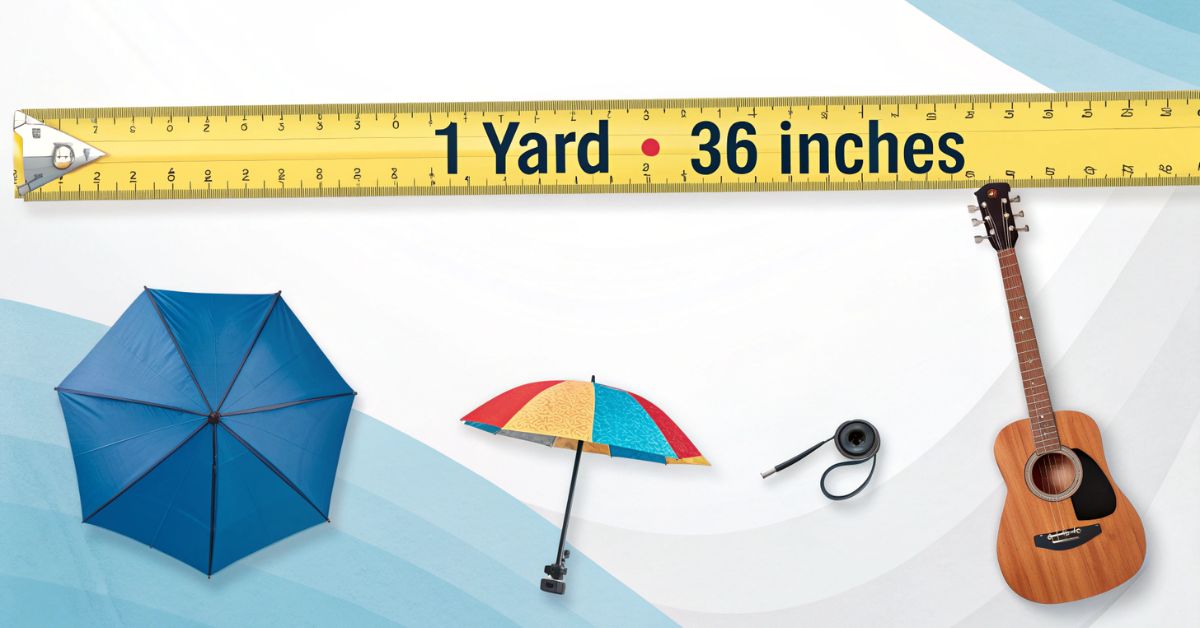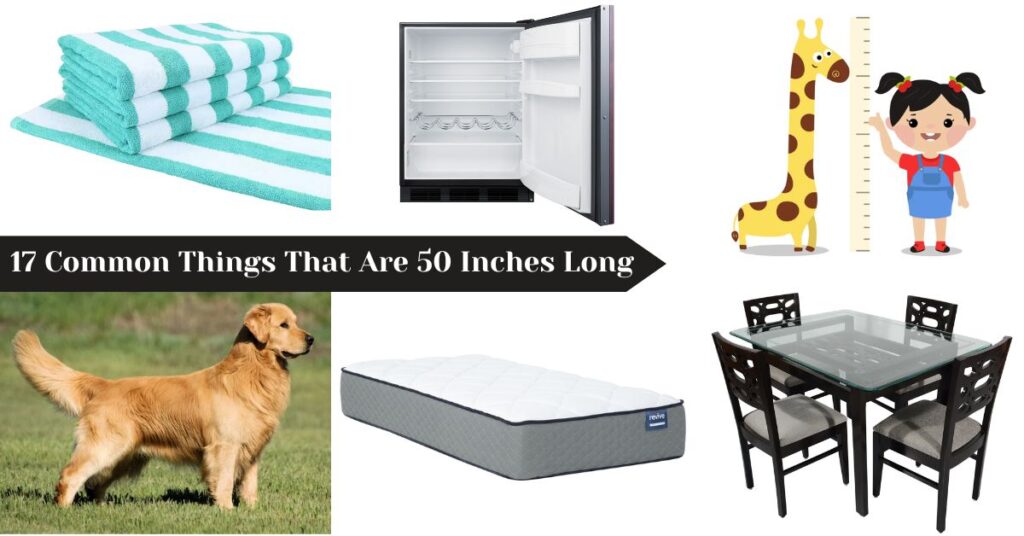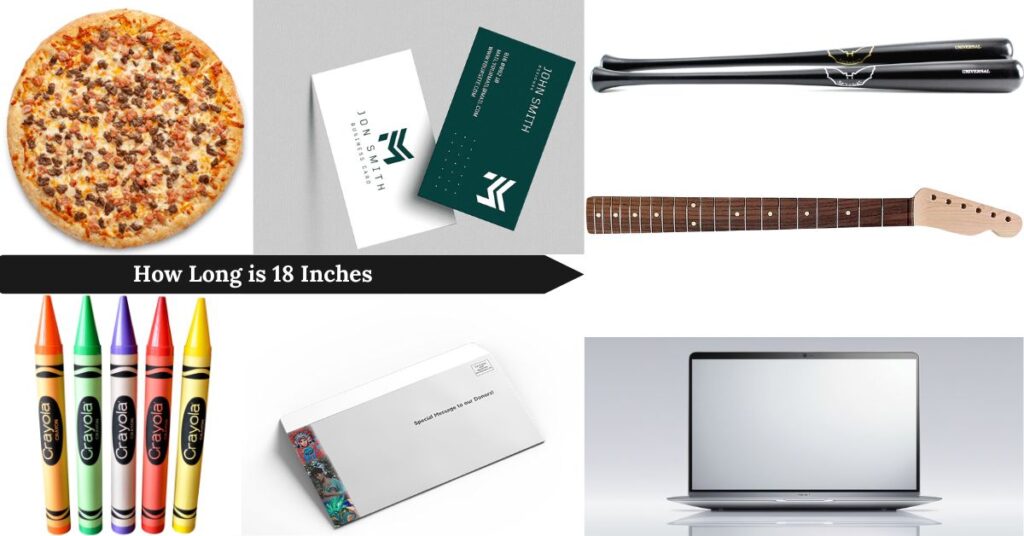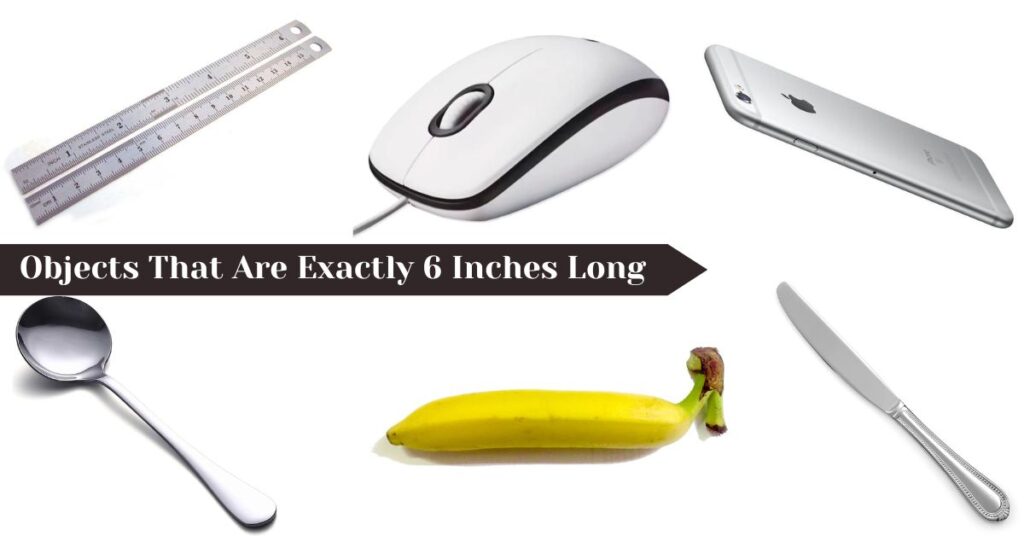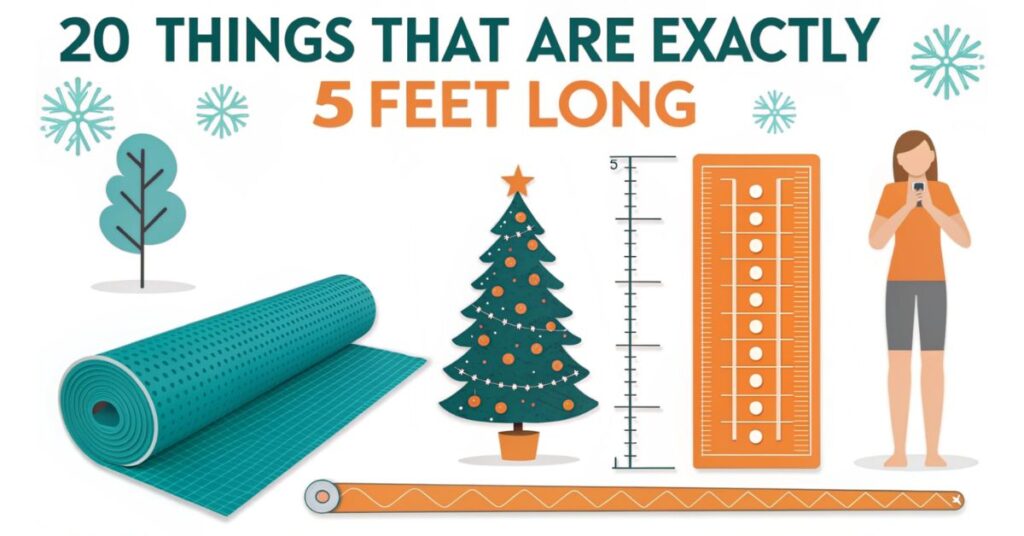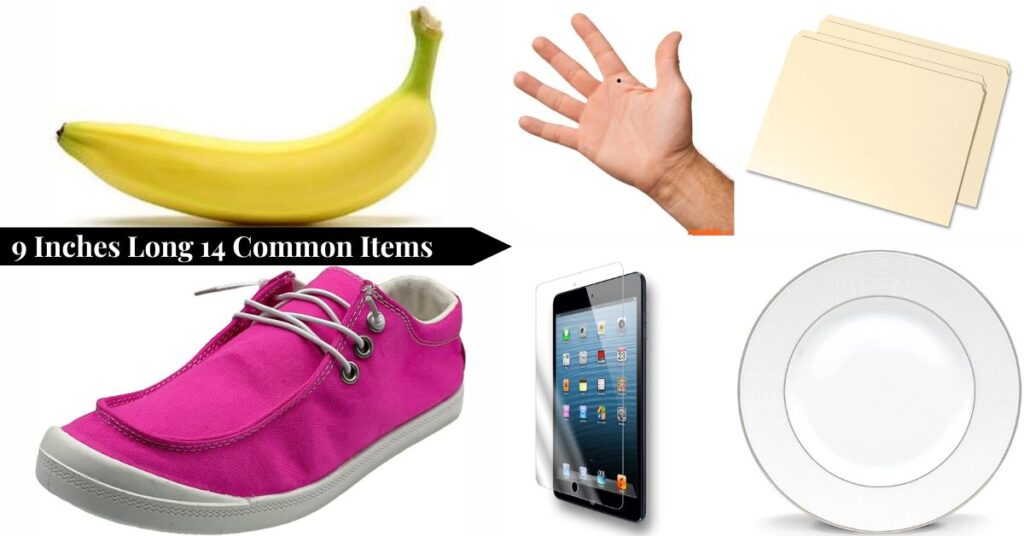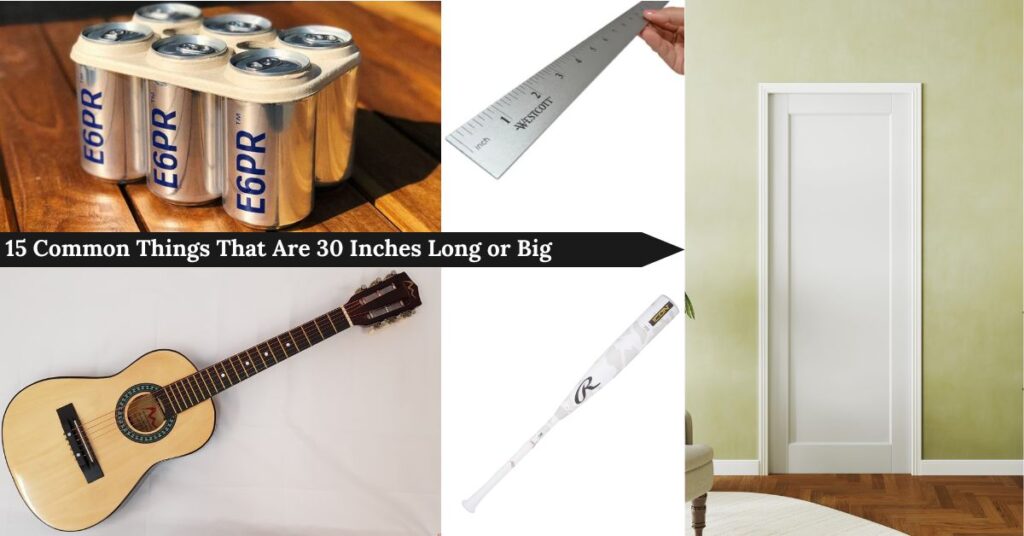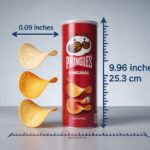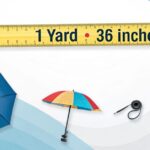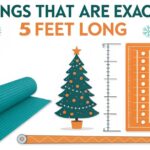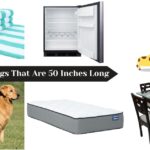Ever stood in a fabric store or hardware aisle, staring blankly at measurements and wondering exactly how long a yard really is?
You’re holding a tape measure, but visualizing 36 inches still feels abstract without a tangible reference point.
This guide reveals twelve everyday objects that measure about one yard, transforming confusing numbers into clear, practical understanding you can use immediately.
The Mathematics Behind Yards and Inches
🔢 Yard Math Breakdown
Mastering the 36-Inch Equivalency
📐 36-Inch Core
🔢 Formula: Yards × 36 = Inches
Here’s the fundamental truth: one yard equals exactly 36 inches. This conversion anchors all yard-based calculations in construction, sewing, landscaping, and beyond.
Breaking it down further helps cement the relationship:
- 1 yard = 36 inches
- 1 yard = 3 feet (since each foot contains 12 inches)
- 1 yard = 0.9144 meters (for international conversions)
Think of it as three ruler lengths placed end-to-end. Each standard ruler measures 12 inches (one foot), so stacking three creates that magical 36-inch yard measurement.
Quick Conversion Reference
📊 Conversion Chart
Pro Tip: Multiply Yards by 36
Understanding fractional yards prevents expensive material miscalculations:
- 1/4 yard = 9 inches
- 1/2 yard = 18 inches
- 3/4 yard = 27 inches
- 2 yards = 72 inches
- 3 yards = 108 inches
- 5 yards = 180 inches
Memory trick: Multiply the number of yards by 36. Want to know how many inches in 2.5 yards? Calculate 2.5 × 36 = 90 inches. Simple multiplication eliminates guesswork.
Clearing Up the Confusion
❌ Common Mix-Up
🚫 Avoid: Order 3x More Material
Does 1 yard equal 12 inches? Absolutely not. This common misconception confuses yards with feet. One foot equals 12 inches, while one yard equals three feet (or 36 inches total).
Remembering this distinction prevents catastrophic ordering errors. Imagine purchasing “12 inches of fabric” when you actually need a full yard. You’d end up with one-third the material required, derailing your entire project.
12 Everyday Objects That Measure Approximately One Yard
📦 12 Yard Objects
Bat
Yardstick
Door
Child
Visual Hack: Instant Estimation Tools
1. Standard Baseball Bat Length
⚾ Baseball Bat
🏟️ Swing Ref: Optimal Speed
Regulation baseball bats measure between 33-36 inches for adult players, placing them squarely in yard territory. Youth bats run shorter (26-31 inches), but adult models serve as near-perfect yard visualizations.
Major League Baseball caps bat length at 42 inches, though most professional players choose 33-34 inch models for optimal swing speed. That standard 33-34 inch range sits just shy of a full yard, making baseball bats excellent measuring references.
Next time you’re estimating fabric length or garden bed width, picture a baseball bat. That mental image provides immediate spatial understanding far clearer than “36 inches” alone.
2. Kitchen Countertop Depth
🍳 Countertop Depth
Cabinet
🍲 Ergonomic: Comfortable Reach
Standard kitchen countertops measure 24-25 inches deep from front edge to backsplash. However, when you factor in cabinet depth (typically 24 inches) plus countertop overhang (about 1 inch), the total depth approaches yard measurements.
Kitchen designers use these standardized dimensions for ergonomic food preparation. The 24-25 inch depth allows comfortable reach while standing, preventing back strain during extended cooking sessions.
Walk into your kitchen right now and measure from the countertop edge to the wall. You’re experiencing roughly two-thirds of a yard—a tangible reference for future material estimates.
3. Guitar Length from Headstock to Body
🎸 Guitar Length
🎵 Musician Ref: Headstock to Body
Acoustic and electric guitars span approximately 36-40 inches from headstock tip to body end. This makes guitars exceptional yard visualizations, especially for musicians who handle instruments daily.
Classical guitars typically measure 39 inches overall, while electric guitars range from 36-42 inches depending on scale length and body design. The Fender Stratocaster, one of history’s most iconic electric guitars, measures roughly 39.5 inches—just slightly over one yard.
Gibson Les Pauls come in at approximately 40 inches. Acoustic dreadnoughts stretch to 41 inches. Despite variations, most guitars hover remarkably close to that 36-inch yard measurement, making them reliable mental references.
4. Yardstick (The Obvious Champion)
📏 Yardstick
🏪 Promo Item: Garage Essential
The yardstick exists for exactly this purpose—measuring one yard with precision. These wooden or metal rulers display 36 inches marked in clear increments, typically showing both inches and centimeters.
Hardware stores distribute branded yardsticks as promotional items, making them ubiquitous in American homes. Check your garage, workshop, or utility closet—you probably own at least one yardstick without realizing it.
Fabric stores prefer yardsticks over tape measures for cutting material on wide tables. The rigid structure prevents sagging and ensures accurate cuts through multiple fabric layers.
Unlike flexible tape measures, yardsticks maintain straight edges for drawing lines and checking surface flatness. Carpenters use them to verify board straightness before cutting. Quilters employ them for pattern marking. Teachers demonstrate measurement concepts with classroom yardsticks.
5. Standard Door Width
🚪 Door Width
🏠 Code Tip: Accessibility Standard
Interior residential doors typically measure 30-36 inches wide, with 32 inches being the most common standard. This places door widths squarely within yard measurement territory.
Building codes mandate minimum door widths for accessibility. The Americans with Disabilities Act (ADA) requires doorways providing at least 32 inches of clear passage for wheelchair access. Standard 36-inch doors accommodate this requirement comfortably.
Exterior entry doors often measure 36 inches to allow furniture passage and emergency evacuation. French doors typically feature two 30-inch panels, totaling 60 inches combined but maintaining that familiar yard-based individual width.
Next time you walk through a doorway, mentally register that width. You’re passing through approximately one yard of space—a visceral experience that builds measurement intuition.
6. Small Child’s Height (Around Age 3-4)
👶 Child’s Height
✅ CDC Growth: Yard Milestone
Average three-year-olds stand approximately 36-38 inches tall, making toddlers surprisingly accurate yard measurements (though admittedly less practical for construction projects).
According to CDC growth charts, boys at age three average 37.5 inches tall, while girls average 37 inches. By age four, boys reach approximately 40.5 inches and girls hit 40 inches—just slightly exceeding one yard.
Parents often mark children’s heights on doorframes, creating lasting growth records. Those early childhood measurements typically cluster around the yard mark, providing memorable visual references for spatial understanding.
Obviously, you can’t carry a toddler to Home Depot for lumber comparisons. However, if you have young children, their height offers an immediately relatable way to conceptualize yard measurements in family contexts.
7. Golf Club Driver Length
🏌️ Golf Driver
⛳ Pro Tip: ~1.25 Yards Reference
Regulation golf club drivers measure 43-46 inches for men’s clubs and 42-44 inches for women’s clubs. While exceeding one yard slightly, drivers remain useful reference points for understanding yard-plus dimensions.
The United States Golf Association (USGA) caps driver length at 48 inches maximum for tournament play. Most recreational players choose 45-inch drivers for optimal distance and control balance.
Professional golfers sometimes use shorter drivers (43-44 inches) sacrificing slight distance for improved accuracy. Bryson DeChambeau famously experimented with a 48-inch driver before reverting to shorter lengths.
If you golf regularly, visualizing your driver length provides instant spatial understanding. That club in your bag represents about 1.25 yards—a reference point for estimating slightly longer measurements.
8. Carry-On Luggage Linear Dimensions
🧳 Carry-On Luggage
✈️ Traveler Ref: Airport Standard
Airlines restrict carry-on luggage to maximum linear dimensions (length + width + height) totaling around 45 inches for most carriers. Individual dimensions often approach yard measurements.
A typical carry-on suitcase measures approximately 22 inches long × 14 inches wide × 9 inches high. That 22-inch length represents roughly 60% of a yard, while the combined linear dimension exceeds one yard significantly.
Delta, United, and American Airlines all permit carry-ons up to 22 × 14 × 9 inches. International carriers vary, but IATA recommendations suggest similar dimensions globally.
The 22-inch length creates a useful reference point between half-yard (18 inches) and full yard (36 inches). Frequent travelers develop intuitive understanding of these dimensions through airport security experiences.
9. Fireplace Mantel Height
🔥 Fireplace Mantel
🏠 Proportion: Room Size Balance
Fireplace mantels typically install 48-60 inches above floor level, though mantel length often spans yard measurements. Standard mantel shelves measure 48-72 inches long depending on fireplace width.
A 60-inch mantel equals 1.67 yards—useful for understanding how yard measurements scale upward. National Fire Protection Association codes require minimum clearances between mantels and fireplace openings, typically 12 inches for every inch of mantel projection.
Wood-burning fireplace mantels average 54-60 inches long, while gas fireplace mantels can extend to 72 inches or more. Custom installations vary wildly, but standard prefabricated mantels cluster around these yard-based dimensions.
Interior designers calculate mantel dimensions proportionally to room size. A 60-inch mantel looks balanced above a standard fireplace in rooms spanning 12-15 feet wide.
10. Walking Stride for Average Adults
🚶 Walking Stride
🧠 Body Tool: No Equipment Needed
Your natural walking stride measures approximately 30-36 inches during normal pace, making three steps equal roughly three yards (or one “first down” in football terminology).
Biomechanics research from the Journal of Rehabilitation Research shows men average 31-inch strides while women average 26-inch strides during casual walking. Faster walking lengthens stride to 36-40 inches.
Taller individuals naturally take longer strides. Someone standing 6 feet tall might stride 34-36 inches, while someone 5’4″ might stride 28-30 inches. Age also affects stride length—older adults often shorten stride for stability.
This body-based measurement becomes incredibly practical. Need to estimate a 10-yard distance? Count 30 normal steps. Checking if fabric will fit a 5-yard table? Walk alongside visualizing roughly 15 strides.
11. Rolled Fabric Bolt Width
🧵 Fabric Bolt Width
🛍️ Sewing Ref: Per Yard Pricing
Textile industry standards dictate fabric bolts commonly measure 36, 45, or 60 inches wide. The traditional 36-inch width equals exactly one yard, making fabric purchasing straightforward.
Quilting cotton typically comes in 42-44 inch widths, slightly exceeding one yard. Apparel fabrics vary from 36 inches (lightweight cottons) to 60 inches (wide wool suiting). Home décor fabrics often measure 54 inches to minimize seaming in curtains and upholstery.
When fabric shops quote prices “per yard,” they mean one yard of length at the bolt’s standard width. A yard of 45-inch-wide fabric provides 1,620 square inches of material (36 inches × 45 inches).
Experienced sewers automatically visualize fabric requirements in yard measurements. A simple shirt needs 1.5 yards. Curtain panels require 2-3 yards each depending on length. A queen-size quilt backing takes 7-8 yards of standard-width fabric.
12. Hockey Stick Length
🧵 Fabric Bolt Width
🛍️ Sewing Ref: Per Yard Pricing
Hockey sticks range from 36-63 inches depending on player height and position. Youth sticks start around 36 inches, while adult sticks extend to 60 inches for defensemen preferring longer reach.
USA Hockey recommends youth players (ages 4-7) use 36-42 inch sticks. Junior players (ages 7-13) graduate to 48-54 inch sticks. Adult recreational players typically choose 56-58 inch sticks for optimal puck handling.
Professional players customize stick length meticulously. Shorter forwards (56-58 inches) favor quick releases, while taller defensemen (60-63 inches) prefer extended poke-check range.
Youth hockey sticks at exactly 36 inches serve as perfect yard references for households with young athletes. The stick leaning in your garage provides an instant, tangible measurement comparison.
Visualizing One Yard
Body-Based Estimation Methods
Your body becomes a surprisingly accurate measuring instrument once you calibrate personal dimensions. The arm-span technique works remarkably well for yard estimation without tools.
Extend your dominant arm fully to the side. Measure from your nose to your extended fingertips. For many adults, this distance approximates 30-36 inches—very close to one yard. Taller individuals often exceed 36 inches, while shorter people measure slightly under.
Perform a one-time calibration: Use a tape measure to check your personal nose-to-fingertip measurement. Write it down. Now you possess a portable measuring tool requiring no equipment.
The two-stride method offers another body-based approach. Walk naturally and measure two complete steps (one left, one right). Most adults cover 50-70 inches in two strides, roughly two yards. Half that distance estimates one yard.
Floor Tile Counting
Standard floor tiles measure 12×12 inches (one square foot). Three tiles placed lengthwise equal exactly 36 inches—one perfect yard. Many commercial and residential spaces use this tile size, creating built-in measuring references.
Vinyl composition tiles (VCT) in commercial buildings almost universally measure 12×12 inches. Count three tiles in any direction, and you’ve visualized one yard precisely.
Ceramic tiles vary more widely (6×6, 8×8, 12×12, 18×18 inches), but 12×12 remains extremely common in residential bathrooms and kitchens. Grout lines add slight length, but three tiles still approximate one yard closely.
This technique shines when measuring rooms for furniture placement or determining rug sizes. Count tiles instead of fetching measuring tools, then multiply by 12 inches per tile.
Smart Tools for Measuring Yards Accurately
Essential Equipment for Different Scenarios
Retractable tape measures remain the most versatile yard measurement tool for general purposes. Quality 25-foot tapes display clear yard markings alongside foot and inch graduations.
Stanley FatMax and Milwaukee tape measures feature large, high-contrast markings readable in poor lighting. Both brands mark yards with distinct labels (“1 YD”, “2 YD”, etc.) eliminating conversion mental math.
Blade width matters for long measurements. Wider 1-inch blades extend further before collapsing compared to narrow 3/4-inch blades. When measuring alone, this difference determines whether you can span distances unassisted.
Look for tape measures with both imperial (inches/feet/yards) and metric (centimeters/meters) markings. Dual-scale tapes handle projects mixing measurement systems without requiring separate tools or conversion calculations.
Laser Distance Measurers
Laser measuring tools transformed yard measurement for large spaces. Point the laser at a distant wall, press the button, and receive instant distance readouts in feet, inches, or meters.
Bosch GLM 20 measures up to 65 feet (21.67 yards) with ±1/16-inch accuracy. Leica DISTO models extend to 200 feet (66.67 yards) for surveying and large construction sites.
These digital tools eliminate the stretching, holding, and reading challenges of long tape measures. One person measures multi-yard distances accurately without assistance. Indoor room measurements become 30-second tasks instead of 5-minute struggles.
Laser measurers calculate area and volume automatically. Measure room length (6 yards) and width (4 yards), and the tool computes 24 square yards instantly—perfect for flooring or carpet estimates.
Limitations include requiring solid surfaces for laser reflection. You can’t measure mid-air distances or shoot through obstacles. Bright sunlight sometimes overwhelms laser visibility, though quality models incorporate viewfinders addressing this issue.
Measuring Wheels
Measuring wheels excel for long yard measurements in landscaping, paving, and surveying applications. Roll the wheel along the ground, and mechanical counters track linear distance covered.
Professional measuring wheels measure up to 10,000 feet with accuracy within 1%. Landscapers use them for property line measurements, fence planning, and irrigation system layouts requiring multi-yard precision.
The rolling action follows terrain contours, measuring actual surface distance rather than straight-line crow-flight distance. This matters significantly on sloped properties where ground distance exceeds horizontal distance.
Digital measuring wheels display running totals in yards, feet, meters, or kilometers. Reset buttons start new measurements without manual counter adjustments. Some models store multiple measurements for comparing distances.
Fabric Measuring Tapes
Flexible fabric measuring tapes serve sewing, quilting, and body measurement applications. These soft 60-inch or 120-inch tapes conform to curved surfaces impossible for rigid yardsticks.
Dressmakers wrap fabric tapes around bodies measuring circumferences—bust (around fullest part), waist (narrowest point), and hips (fullest part). Garment fit depends entirely on accurate body measurements driving pattern size selection.
Quilters use long fabric tapes measuring quilt dimensions corner-to-corner diagonally. Rigid tools cannot span soft, folded fabric accurately, while flexible tapes drape naturally showing true dimensions.
Quality fabric tapes feature metal-reinforced ends preventing stretching over time. Cheaper tapes gradually elongate from repeated tension, introducing measurement creep ruining accuracy. Replacement every few years maintains precision.
FAQ’s
What objects are about 1 yard?
Baseball bats (33-36 inches), yardsticks (exactly 36 inches), standard door widths (30-36 inches), acoustic guitars (36-40 inches), and three-year-old children’s heights (36-38 inches) all approximate one yard. Walking strides measure 30-36 inches for average adults.
How many inches makes 1 yard?
Exactly 36 inches equals one yard. This conversion stems from the yard containing three feet, with each foot measuring 12 inches (3 × 12 = 36).
Does 1 yard equal 12 inches?
No—this represents a common but critical mistake. One yard equals 36 inches, not 12 inches. One foot equals 12 inches.
Remembering that yards contain three feet helps maintain clarity: if one foot is 12 inches, then three feet (one yard) must be 36 inches.
What does a 1 yard look like?
Visualize three standard rulers placed end-to-end, since each ruler measures 12 inches and three rulers total 36 inches (one yard).
Alternatively, extend your arm fully and measure from your nose to fingertips—this distance approximates one yard for many adults.
What are common uses for yard measurements?
Fabric purchasing relies almost exclusively on yard measurements in American textile markets. Construction projects calculate lumber, drywall, and trim in yard-based dimensions.
Landscaping professionals estimate mulch, topsoil, and sod coverage using square yards and cubic yards.
Sports facilities design football fields, soccer pitches, and golf courses using yard measurements.
Interior designers specify curtain lengths, carpet areas, and furniture dimensions in yards.
Garden planning employs yard measurements for bed lengths and plant spacing.
What does 1 yard measure?
One yard measures linear distance equal to 36 inches, three feet, or 0.9144 meters. This represents one-dimensional length along a straight line. Square yards measure two-dimensional area (length × width), totaling 1,296 square inches (36 × 36).Cubic yards measure three-dimensional volume (length × width × height), totaling 46,656 cubic inches (36 × 36 × 36).
What is the easiest way to measure a yard?
Use a standard tape measure marked with yard increments for quick, accurate measurements. Quality tapes clearly label “1 YD,” “2 YD,” etc., eliminating conversion calculations.

Welcome to Swiftnis.com! I manage this site to provide accurate and easy-to-understand measurement guides. My goal is to make measurements simple for everyone. Whether you need Conversions, Tools, or Tips, I’m here to help. Enjoy exploring and measuring with confidence!
